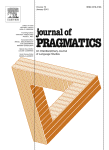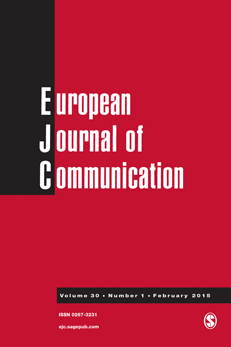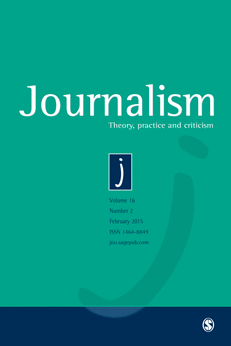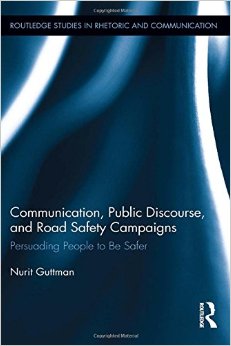Current Research
This book offers an exciting new perspective on the origins of language. Language is conceptualized as a collective invention, on the model of writing or the wheel, and the book places social and cultural dynamics at the centre of its evolution: language emerged and further developed in human communities already suffused with meaning and communication, mimesis, ritual, song and dance, alloparenting, new divisions of labour and revolutionary changes in social relations. The book thus challenges assumptions about the causal relations between genes, capacities, social communication and innovation: the biological capacities are taken to evolve incrementally on the basis of cognitive plasticity, in a process that recruits previous adaptations and fine-tunes them to serve novel communicative ends. Topics include the ability brought about by language to tell lies, that must have confronted our ancestors with new problems of public trust; the dynamics of social-cognitive co-evolution; the role of gesture and mimesis in linguistic communication; studies of how monkeys and apes express their feelings or thoughts; play, laughter, dance, song, ritual and other social displays among extant hunter-gatherers; the social nature of language acquisition and innovation; normativity and the emergence of linguistic norms; the interaction of language and emotions; and novel perspectives on the time-frame for language evolution. The contributors are leading international scholars from linguistics, anthropology, palaeontology, primatology, psychology, evolutionary biology, artificial intelligence, archaeology, and cognitive science.
Eli Dresner

The notion of support is quite heterogeneous: We talk, for example, of pillars providing physical support to a ceiling, of empirical findings providing evidential support to hypotheses, and of one person providing financial support to another. The topic of this note is yet another kind of support, which has received relatively little attention—one person's support of another's action. In what follows I argue that support of this type is best construed (at least in some cases) as a speech act, and I discuss the relations of this kind of speech act to expressions of evaluative judgment.
read more:
http://www.sciencedirect.com/science/article/pii/S037821661400215X
Jerome Bourdon

with: Sabina Mihelj
Audience history poses a methodological as well as an intellectual challenge. Everyday practices of readers, viewers and listeners are typically beyond the remit of sources found in institutional archival collections, and the researcher is often left with a plethora of sources that only marginally address the object of study, and rarely amount to a clear-cut, homogeneous understanding of audiences and their historical practices. Contemporary audience surveys, documents produced by governmental, administrative and legal bureaucracies, professional testimonies, oral history interviews and other sources each offer their own vision of the audience. How does one move beyond these multiple, often contradictory visions, to a reasonably coherent history of the actual everyday practices and thoughts of media users? Given the overwhelming variety, yet in some sense also paucity of relevant sources, it is of no surprise that media historiography has often given preference to safer fields: the history of institutions and media content. Recent years have of course seen some notable advances in the field of audience historiography – most prominently Richard Butsch’s (2000) path-breaking study of American audiences in the 19th and the 20th century, Butsch and Livingstone’s (2013) the edited collection exploring the variegated meanings of audiences historically and globally, as well as the fast growing body of historical studies of film reception and movie-going (e.g. Staiger 1992, Stacey 1994, Maltby et al. 2007, Kuhn 2004). Nonetheless, it is fair to say that historical research on media audiences is still in its infancy. There have been only very few attempts to systematically address its key concerns and methodological principles (see Biltereyst et al. 2012 for an exception), and the empirical focus of existing work has been somewhat uneven, with most research focusing on film and cinema-going and much less on broadcasting, for instance. Furthermore, despite the growth of single country case studies from beyond the western world, we have yet to develop a more synthetic and explanatory account of the differences and similarities between audience histories globally.
Read more:
https://dspace.lboro.ac.uk/dspace-jspui/bitstream/2134/16344/1/AudienceHistory-0-Editorial-Fin-RevisedSept2014fin.pdf
Shira Dvir-Gvirsman

According to cognitive research, members of a social majority are better than minority members at estimating the consensus, since the latter tend to overestimate the popularity of their opinion. These differences have been explained using the motivational reasoning model. The purpose of the current study is twofold: to verify that majority members indeed provide more accurate public consensus estimations and to test the effect of political orientation on this relation. Following the motivational reasoning model, it is suggested that proponents of right-wing ideology will overestimate support for their group, especially when in the minority, since they have a stronger reaction to political threat. The research involved three case studies. In the first, data from 33 surveys conducted over 10 years (N = 15,129) were analyzed using multilevel analysis. The results showed that (a) majority members are more accurate in gauging consensual opinions than minority members; (b) the gap in accuracy between majority and minority members increases with the size of the majority; and (c) those holding right-wing attitudes tend to overestimate their group size, more so when in the minority or when support for their opinion declines. The second case study analyzed data on four different issues, using a within-subject approach (N = 450). The findings were similar, with the exception of a nonsignificant effect for majority size. Finally, in the third case study, the causal mechanism suggested was supported by an experimental setting (N = 388). The results are discussed in light of the motivational reasoning model regarding information processing and ideology.
read more:
http://poq.oxfordjournals.org/content/79/1/1.abstract
Sandrine Boudana

with Zvi Reich
Credit attribution for journalists represents a crucial development in journalism, with numerous organizational, legal, political and literary implications. This article explores the rise of bylines and authorship in the French press during the last 250 years, as an alternative to the Anglo-American model, on which studies have focused. Findings show that bylines not only emerged much earlier in France but also represent different driving forces, functions and dynamics. While the Anglo-American rise of bylines reflected an occupational and organizational phenomenon, in which bylines were considered professional rewards, in the French case, the evolution of bylines was dependent on exogenous factors, mostly political forces that tried to discipline adversarial writers. Thus, in contrast with the quasi-linear progress of Anglo-American bylines, the French case is characterized by ebbs and flows, due to the continuous power struggle between the emerging journalistic field and the literary and political fields
read more: http://jou.sagepub.com/content/15/4/407.short
Elad Segev

In this paper the validity and limits of the news flow theory are examined, utilizing a large digital corpus of 35 popular news sites in 10 different languages over a three-year period. Three key variables were identified: GDP, foreign population and conflict intensity, collectively accounting for more than 70% of the variance of country prominence in the news. After offering a robust model, over-represented and under-represented countries are listed and divided based on their different characteristics and news trends.
Findings show that conflicts tend to be visible only if they are in the Middle East. Over-represented regional centers in West Europe and Asia overshadow the under-represented regional peripheries in East Europe and the Middle East. Finally, the US and Africa serve as a global center and a periphery respectively. The implications of these findings are discussed in order to invite scholars to further expand the theory and the explanatory model accordingly.
read more: http://jou.sagepub.com/content/early/2014/03/03/1464884914521579.abstract
Nurit Guttman

This book discusses the use of communication campaigns to promote road safety, arguing that they need to elicit public discourse on issues pertaining to culture, equity, gender, workplace norms, environmental issues, and social solidarity. Increasingly, new media channels and formats are employed in the dissemination process, making road safety-related messages ubiquitous, and often controversial. Policy makers, educators, researchers, and the public continue to debate the utility and morality of some of the influence tactics employed in these messages, such as the use of graphic images of injury or death, stigmatization (or "blame and shame"), and the use of "black humor." Guttman argues that influencing road safety requires making changes in normative and cultural conceptions of broader issues in society, yet the typical discourse on road safety tends to focus on individual attitudes and practices. The book highlights the importance of social and behavioral theory in communication campaigns on road safety, and critiques the tendency to focus on individual cognition, affect, and risk conceptions rather than on normative, structural, and cultural factors. The volume positions the discourse on road safety as a social issue, and treats road safety behavior as a social activity that directly relates to other public issues, social values, and social policy, while discussing potential uses of social media and participatory approaches. The discussion turns to the role of road safety communication campaigns as part of a democratic process of eliciting public discourse, including how contemporary society could address broader issues of risk and safety.

I explore the manner in which the internet, when first commercialized, impacted on structural shifts in the journalistic environment. In particular, I consider the changes in and perseverance of established structures, which I label framing, trusting, and timing, as traditional news producers expand their strategies from newspaper publication alone to online news dissemination. Relying on the structuration approach, I describe how the structural shifts identified reflect neither technological necessity nor autonomous managerial schemes, but are constituted in and through the practices of journalists, as shaped by the emerging networked media. Concentrating on Israel's most popular newspaper, Yedioth Ahronoth, I demonstrate how journalists' enactment with the internet altered the structures that threatened this organization yet simultaneously supported those that enhanced its central position in Israel's journalistic arena.
read more: http://www.tandfonline.com/doi/abs/10.1080/1461670X.2014.985064#.VNi6HEJ5j4Y
Ronit Kampf and Nathan Stolero

Serious games like PeaceMaker are emerging as a new medium for peace education (PE). We focus on the assessment of this computerized simulation of the Israeli-Palestinian conflict in order to identify the effects it might have in helping to narrow the knowledge gap between the players. In addition, we examine the role of news media use about the conflict in knowledge acquisition after playing the game. We conducted an experimental study with the participation of 185 Israeli undergraduate students of Jewish and Palestinian origin. In order to gauge the effect of the game with regard to knowledge acquisition about the conflict, we used a pre- and post-intervention experimental design and utilized questionnaires. We found that the knowledge gap between participants who held high levels of knowledge about the conflict and those who held low levels of knowledge about it before playing the game narrowed after playing it. Second, participants holding more knowledge about the conflict before playing the game were more likely to win it than those holding less knowledge. Finally, the game narrowed the knowledge gap between participants who consumed television (TV) as a major source of information about the conflict and those who did not consume it. Our results indicate that serious games like PeaceMaker are effective as a tool for PE, because they are useful in increasing knowledge about the Israeli-Palestinian conflict and narrowing the knowledge gap between the players, particularly for young people who are direct parties to this conflict and native to the online world.
read more: http://www.tandfonline.com/doi/abs/10.1080/1369118X.2014.982142#.VOXEBEJ5j4Y

